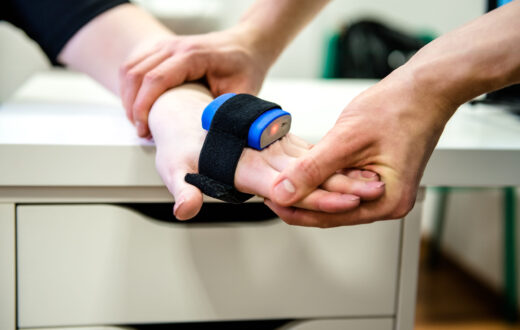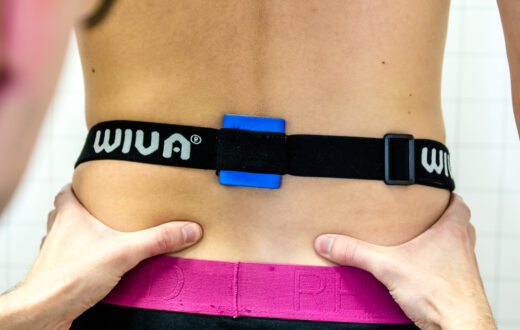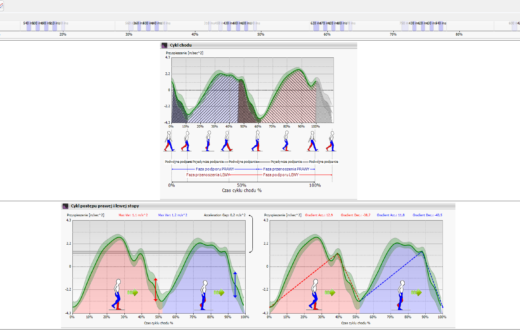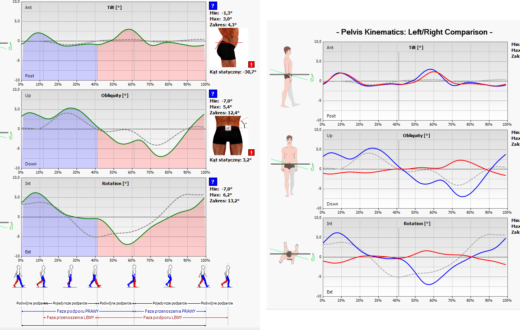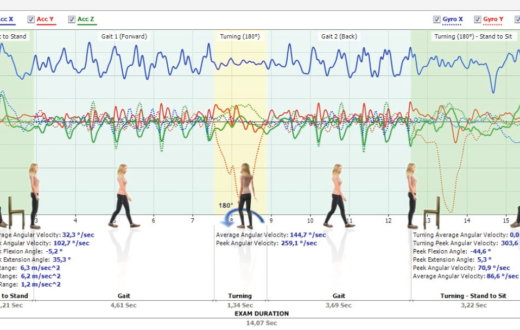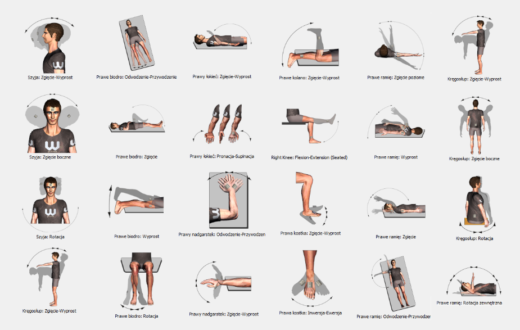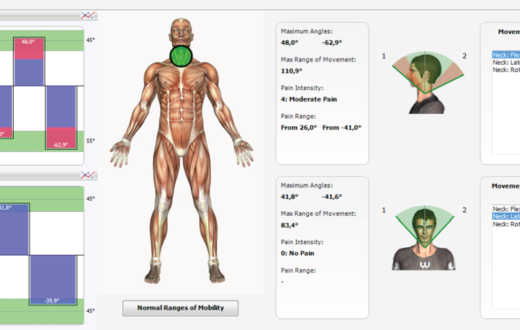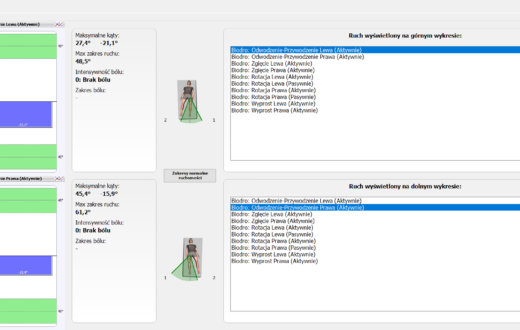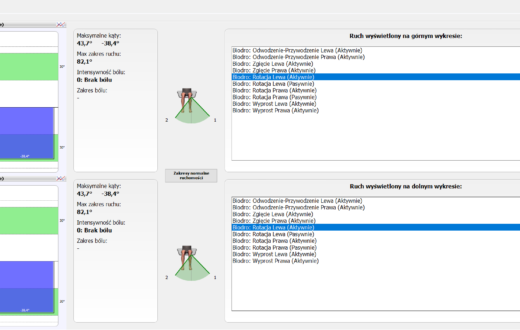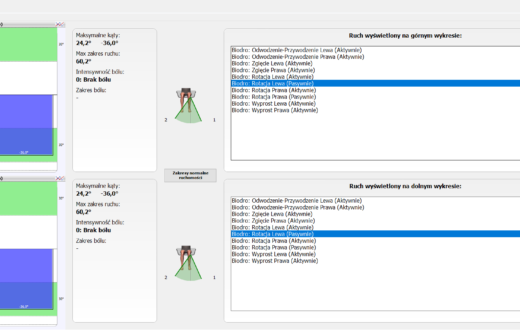The second service implemented by specialists after the course at our eduPODOLOGIA.pl facility is
POSTURE DIAGNOSTICS
A detailed assessment of body posture is carried out during a physical examination, supported by methods and techniques for functional assessment. In this area, many solutions have been developed in the world that enable the examination of the body in motion (range of motion, gait, running, jumping) and structural efficiency (e.g. assessment of muscle efficiency). In practical solutions, it is essential that the diagnostic methods and tools used are both intuitive to use and economical. These two main aspects will determine their availability and effectiveness. During the GOOD SCHOOL OF ORTHOPODOLOGY (DSO) course, participants gain knowledge in the field of physical examination, functional tests and anthropometric measurements (PS. the detailed program of the course can be found HERE).
Posture examination is carried out using a sensorimotor sensor (including a biokinetic sensor, postural sensor, trade name WIVA SCIENCE). It is a device the size of a matchbox, placed on the body in the diagnostic areas, allowing the examination of the above-mentioned areas. The ability to test all these areas with one sensor ensures that they are handled by one software (in our case, it is BIOMECH STUDIO). On the foot, gait and balance assessment page, we have already mentioned the BIOMECH software (HERE). It supports all devices on which our students learn and which are used in practice by the Specialists cooperating with us. The diagnostic areas implemented by the WIVA SCIENCE sensorimotor sensor are:
- examination of the range of motion in the joints in three planes (sagittal, frontal, transverse); three-dimensional diagnostics is possible thanks to the implementation in the sensor simultaneously: gyroscope, magnetometer and accelerometer
- pelvic kinematics examination – three-dimensional assessment of pelvic girdle mobility (falling/lifting, forward/backward tilt, rotation) carried out during walking and running
- examination of spatio – temporal parameters of gait, running and pathological gait (TUG – get up and go protocol), i.e. single/double stance time, rhythm, gait, stride length, etc.
- testing the efficiency of individual muscle groups, in particular the obtained parameters are: work, power, energy, etc., obtained after an individualized assessment of the anatomical structure (height, weight, limb length, and other parameters affecting the work of muscles, including the so-called 1RM)
- plyometry, i.e. a test of jumping, determining muscle efficiency, as well as tests and the quality of jumps (in 9 different tests).
VIDEOGRAMETRY AND PHOTOGRAMETRY
These are methods of postural diagnostics that are used for physical examination, both visual assessment and anthropometric measurements in the field of posture. Implemented by means of a computer program connected to a camera and camera, they allow for reliable and high-sensitivity anthropometric measurements, without the need to use additional analog devices (such as manual goniometry, length rulers, circuits). The BIOMECH STUDIO software, which supports both devices for testing feet, gait and balance (as we wrote above), also has an implemented interface for videogrammetry and photogrammetry. The interface also allows for measurements made on medical imaging photos (e.g. X-ray)
